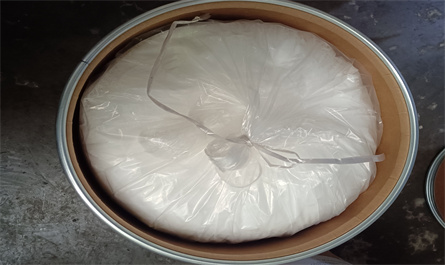Effects and Applications of Plant Growth Retardants
1. What are Plant Growth Retardants?
Plant growth retardants are a class of chemical substances that inhibit plant growth, elongation, and development and promote proline accumulation. Plant growth retardants are commonly used in agriculture and horticulture to regulate plant growth and development rates, ensuring the quality and yield of crops or garden plants.

2. How Plant Growth Retardants Work
Plant growth retardants work by regulating the hormone balance within the plant, interfering with hormone production and metabolism, thereby slowing plant growth. Commonly used plant growth retardants include chloroquat chloride, gibberellic acid (GA3), and paclobutrazol (Paclo). These plant growth retardants all work by inhibiting the synthesis and transport of gibberellins, thereby reducing gibberellins levels in the plant and slowing plant growth.

III. Applications of Plant Growth Retardants
1. Accelerating Fruit Ripening: Plant growth retardants can accelerate fruit ripening and enhance color vividness, ensuring higher quality fruit before market release.
2. Controlling Plant Height: Plant growth retardants can control plant height, thereby increasing photosynthesis and productivity in weaker plants.
3. Increasing Grain Number per Ear: Appropriate application of plant growth retardants can increase grain number per ear and make the grains fuller, thereby boosting crop yields.
4. Extending the Growth Cycle of Ornamental Crops, Such as Potted Flowers: Plant growth retardants are widely used in the production of flowers and ornamental plants, extending the plant's growth cycle and ornamental period, beautifying the environment, and increasing market value.
Plant growth retardants are a class of chemical substances that inhibit plant growth, elongation, and development and promote proline accumulation. Plant growth retardants are commonly used in agriculture and horticulture to regulate plant growth and development rates, ensuring the quality and yield of crops or garden plants.

2. How Plant Growth Retardants Work
Plant growth retardants work by regulating the hormone balance within the plant, interfering with hormone production and metabolism, thereby slowing plant growth. Commonly used plant growth retardants include chloroquat chloride, gibberellic acid (GA3), and paclobutrazol (Paclo). These plant growth retardants all work by inhibiting the synthesis and transport of gibberellins, thereby reducing gibberellins levels in the plant and slowing plant growth.

III. Applications of Plant Growth Retardants
1. Accelerating Fruit Ripening: Plant growth retardants can accelerate fruit ripening and enhance color vividness, ensuring higher quality fruit before market release.
2. Controlling Plant Height: Plant growth retardants can control plant height, thereby increasing photosynthesis and productivity in weaker plants.
3. Increasing Grain Number per Ear: Appropriate application of plant growth retardants can increase grain number per ear and make the grains fuller, thereby boosting crop yields.
4. Extending the Growth Cycle of Ornamental Crops, Such as Potted Flowers: Plant growth retardants are widely used in the production of flowers and ornamental plants, extending the plant's growth cycle and ornamental period, beautifying the environment, and increasing market value.
RECENT POSTS
-
Rational Use of Plant Growth Regulators to Promote Fruit Tree Yield and Quality Improvement
-
Combination of Different Plant Growth Regulators with Rooting Hormone
-
Differences and Applications of Zeatin Trans-Zeatin and Trans-Zeatin Riboside
-
14-Hydroxylated brassinolide Supporting Scientific Planting and Application Analysis of Typical Crops
Featured News



